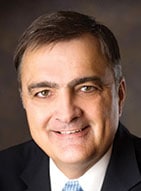
Sheet Metal, Air, Rail and Transportation Workers’ Transportation Division National Legislative Director John Risch appeared this morning (Wednesday, Oct. 11) before the Surface Transportation Board (STB) at a listening session about service disruptions caused by CSX’s move to excessively long trains.
Here are the remarks he delivered before the listening session:
I appreciate the opportunity to appear here today. My name is John Risch and I am the National Legislative Director for the Transportation Division of the International Association of Sheet Metal, Air, Rail and Transportation Workers (SMART TD). SMART TD – formerly the United Transportation Union – our union is the largest of the rail unions in an industry that is almost 90 percent organized.
On the CSX railroad I represent conductors, engineers, switchmen and yardmasters. In my brief time to comment today I will talk about how CSX’s move to excessively long trains has resulted in substantial service disruptions.
Freight trains in America are typically one to one-and-one-half miles long, but in recent months CSX has routinely been operating trains that are two and even three miles in length.
These excessively long trains cause all sorts of logistical problems that cause tremendous amounts of delay wherever they go.
- A three-mile-long train simply goes slower than a one-mile long train. It takes longer to start and get to top speed which is almost never the maximum allowable speed because they are simply too heavy and hard to handle. Slowing down for speed restrictions and getting back up to speed takes far more time.
- Most rail main lines in our nation are single-track, so when one train meets another train coming in the opposite direction one of the trains must pull into a siding to let the other train pass. There are very few sidings that are long enough to hold a 2-3-mile-long train, meaning if the long train takes the siding both trains must stop and there is what we call a “saw-by” causing significant delay. If both trains are too long we have an incredible event called a “double saw-by” which can take hours for one to pass the other.
- Train operations require that the crew in the lead locomotive maintain constant communications with the rear locomotives or the device on the rear car of the train. When these communications fail the train is restricted to 30 mph and on grades of more than 2% the train is required to stop. The longer the train the more these communications fail. This loss of communications is very common when trains go around curves or go over the tops of mountains.
- The longer the train the higher the probability of mechanical failure. More cars mean more problems. Excessively long trains are also far more likely to break-in-two which can cause hours of delay. When there is a mechanical problem or break-in-two the trains conductor must walk back from the lead locomotive to deal with the problem. When the train is two miles long or longer and the conductors’ portable radio oftentimes fails to communicate with the locomotive causing significant delay. A train uses air for its braking system and the longer the train the harder it is to maintain adequate air in the system.
- Many CSX engineers have little to no experience operating these excessively long trains. We have many instances of these trains breaking in two and causing significant delays, including delaying an Amtrak train for 9 hours on a siding in Florida.
- When a train is too long to fit into a yard track the train must be separated and put on two or more tracks, adding to yard congestion and additional delay.
- The longer the train the more crossings that are blocked and they are blocked for longer periods of time. Causing safety concerns. See letter from Indiana school.
- Crews cannot reliably hear the report of wayside defect detectors when trains exceed 12,000 feet. When that happens, the train must stop and follow procedures to make sure their train is safe to proceed.
- Required brake tests take longer on a long train. Some brake tests require the inspection of every car and walking a 3-mile-long train to the end and back is 6 miles. Add to that a portable radio that fails to transmit and the result is substantial train delay.
- Trains are too long for foreign line yards: for example, the Belt Railway of Chicago only accepts 8,000 foot trains. However, CSX has sent many 9,000+ foot trains there that have been rejected requiring the crew to divert to Barr Yard and set out enough cars to get down to the 8,000-foot maximum before returning to the BRC Yard.
The question of the day is: “What can the STB do about it?”
- We recommend that the STB immediately restrict train lengths to not exceed the length of the sidings on lines these trains operate on.
- Or at the very least conduct an investigation on the effect train lengths have on service and safety in the industry.
Urging CSX to do better will not fix the problems that excessively long trains cause.
I wrote the FRA last April asking for action on this issue and they have so far not even responded to my letter. They have no Administrator and are reluctant to do anything until they do.
Related News
- Help the McLucas Family After Fire Destroys Their Home
- PRESS RELEASE: SEPTA Offers “Embarrassing” Contract to SMART-TD Members
- What SMART-TD Members Need to Know as SEPTA Strike Looms For TWU
- Help Local 427 Compete to “Fill the Sleigh” With Donated Bikes
- Veteran Benefits Enhancement Act Protects Railroaders Who Served
- Brother loses leg to on-the-job injury, Needs Our Help
- Honoring Our Members Who Have Served: A Veterans Day Message from President Ferguson
- Veterans Day/Remembrance Day 2025: General President Coleman’s message to members
- 2025 Houston Solidarity Rally: barbecue, brotherhood, and building power
- SMART-TD’s Chris Smith Wins City Council Seat in Tama, Iowa
